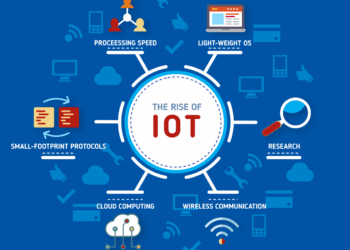In a world where every click, every purchase, and every search query leaves a digital footprint, the concept of privacy has been fundamentally redefined. For generations, privacy was a tangible thing—a closed door, a sealed letter, a private conversation. Today, it’s a complex, abstract, and increasingly fragile commodity. As our lives become more intertwined with technology, our personal data is being collected, analyzed, and monetized on an unprecedented scale. This has transformed digital privacy from a niche concern into a central battlefield of the 21st century. This article will take a deep dive into the evolving landscape of digital privacy, exploring the new threats that have emerged, the progressive regulations and technologies being developed to combat them, and the proactive steps individuals can take to reclaim control over their own data.
The initial promise of the internet was one of freedom and connection, but it has evolved into a system where convenience often comes at the cost of our personal information. The simple act of browsing the web or using a smartphone app generates a continuous stream of data that is a goldmine for corporations and, in some cases, a tool for government surveillance. This new reality has sparked a global debate about who owns our data, how it should be used, and what rights we have to protect it. The battle for privacy is not just a technological one; it is a battle for our autonomy and control in an increasingly digital world.
A. The Threats to Digital Privacy: Old Tactics, New Scale
The methods used to compromise our privacy are becoming more sophisticated and pervasive. While the core goals of these tactics remain the same—to collect and exploit personal information—the scale and tools have become far more advanced.
A. Cross-Platform Behavioral Tracking: It’s no secret that major tech companies track our online behavior, but the extent of this tracking is often underestimated. Companies use a variety of techniques to follow us across different websites and apps to build a comprehensive profile of our interests, habits, and preferences.
- Third-Party Cookies: These small text files are placed on your browser by websites you don’t directly visit. They track your browsing activity and send that information back to advertisers.
- Tracking Pixels and Beacons: These tiny, invisible images are embedded in emails and on websites. When loaded, they alert the sender that you’ve opened the email or visited the site, providing valuable data on your engagement.
- Device Fingerprinting: This advanced technique collects specific details about your device, such as its operating system, browser version, and installed fonts. This unique “fingerprint” can be used to identify and track you even if you delete your cookies.
B. Data Mining by Tech Giants: The largest tech companies, such as Google and Meta, have built their business models on data. They collect staggering amounts of information from their platforms—search queries, social media posts, location data, and even facial recognition data from photos and videos. This data is then analyzed by powerful algorithms to create incredibly detailed profiles that are used to target advertising and personalize content. The lack of transparency in how this data is collected and used is a major point of contention and a primary driver behind new privacy regulations.
C. Data Breaches and Security Lapses: Beyond intentional data collection, a significant threat to digital privacy comes from negligence and criminal activity. Data breaches, where hackers gain unauthorized access to databases, expose sensitive personal information. High-profile incidents at companies like Equifax, Yahoo, and Marriott have affected millions, revealing names, addresses, Social Security numbers, and credit card details. These breaches serve as a stark reminder that our data is only as secure as the company that holds it.
D. Government Surveillance: In the name of national security or law enforcement, governments have increasingly used technology for mass surveillance. The use of facial recognition cameras, location tracking from cell phone data, and the collection of online communications raises serious questions about the balance between security and individual privacy. The debate over government access to encrypted data and backdoors in software highlights the growing tension between personal liberty and state power in the digital age.
B. New Defenses: Regulations and Privacy-Focused Technology
In response to the growing threats, a global movement has emerged to protect digital privacy. This has led to the development of new regulations and innovative technologies designed to give control back to the user.
A. Legislative Measures (GDPR, CCPA): The most significant step in the fight for privacy has been the introduction of new legislation.
- GDPR (General Data Protection Regulation): Passed by the European Union, the GDPR is a landmark law that gives EU citizens sweeping new rights over their personal data. It mandates that companies obtain explicit consent to collect data, gives users the right to access and correct their data, and introduces the “right to be forgotten,” which allows individuals to demand that their data be deleted. The GDPR’s strict fines for non-compliance have had a global impact, forcing companies around the world to rethink their data practices.
- CCPA (California Consumer Privacy Act): This law gives California residents the right to know what personal information is being collected about them, the right to say no to the sale of their data, and the right to delete their personal information. The CCPA has set a precedent for other states in the U.S. to follow.
B. Privacy-Focused Technological Innovation: Developers and tech companies are building new tools and platforms with privacy at their core.
- Differential Privacy: This technique, pioneered by companies like Apple, adds mathematical “noise” to data before it is aggregated and analyzed. This allows companies to study user behavior trends without being able to identify or trace the data back to an individual.
- End-to-End Encryption: This technology ensures that data is encrypted on the sender’s device and can only be decrypted on the recipient’s device. This makes it impossible for third parties, including the service provider, to read the content of a message. Applications like Signal and WhatsApp have made this a standard for secure communication.
- Privacy-Conscious Browsers and Search Engines: A new wave of internet browsers (like Brave and Firefox) and search engines (like DuckDuckGo) are gaining popularity by prioritizing privacy. They block trackers, prevent digital fingerprinting, and promise not to store or sell user search data. This offers a viable alternative to platforms that rely on a data-driven business model.
C. The Shift in Business Models: Some companies are recognizing that a privacy-first approach can be a competitive advantage. Rather than relying on a business model that monetizes user data, they are focusing on providing a premium product or service. This shift from a data economy to a subscription or product economy is a powerful force for change, as it aligns the company’s interests with the user’s privacy.
C. Taking Back Control: A Guide for Individuals
While laws and new technologies are crucial, the responsibility for digital privacy ultimately lies with the individual. Here are proactive steps everyone can take to protect themselves.
A. Audit Your Digital Presence: Start by reviewing and adjusting the privacy settings on all your social media accounts, mobile apps, and smart devices. Many platforms have complex settings that are designed to be difficult to navigate, but taking the time to understand them and restrict data sharing is a critical first step.
B. Use Privacy-Enhancing Tools:
- VPNs (Virtual Private Networks): A VPN encrypts your internet traffic and routes it through a server in a different location. This masks your IP address and makes it very difficult for third parties to track your online activity.
- Ad Blockers and Tracker Blockers: Browser extensions like uBlock Origin or Privacy Badger can block intrusive ads and prevent tracking scripts from running on websites you visit.
- Secure Messaging Apps: Switch to messaging services that offer end-to-end encryption by default to ensure your conversations remain private.

C. Practice Good Digital Hygiene:
- Strong, Unique Passwords: Use a password manager to create and store unique, complex passwords for every account. This prevents a single data breach from compromising all of your accounts.
- Enable Two-Factor Authentication (2FA): 2FA adds a second layer of security to your accounts, requiring a code from your phone or another device in addition to your password.
- Be Wary of Social Engineering: Always be skeptical of emails, texts, or phone calls that ask for personal information. Phishing and other forms of social engineering are often the first step in a data breach.
- Regularly Delete Old Data: Take the time to clear out old accounts you no longer use and delete data that you no longer need. The less information you have floating around online, the less there is to lose.
In conclusion, the evolution of digital privacy is a dynamic and ongoing process. The threats are becoming more sophisticated, but so are the defenses. The battle is being fought on multiple fronts—in courtrooms with new legislation, in development labs with new technologies, and in our daily lives with our personal choices. Privacy is not a given in the digital world; it is a right that must be consciously fought for and protected. The future of our digital selves depends on our collective awareness, action, and commitment to safeguarding our most valuable asset: our data.












